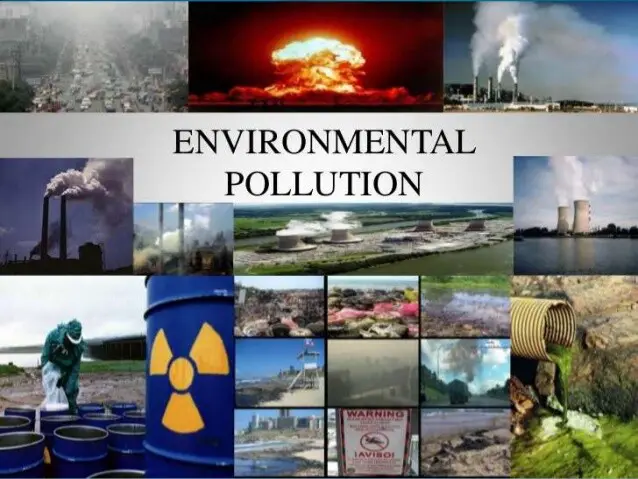If you are concerned about the future of the planet, and you want to make a difference but don’t know where to start, why not do some research and support the best environment charity you can find?
Environmental issues have been a pressing concern far too long. Experts have begged governments to take immediate action for years as the situation has worsened. Environmental charities are critical in addressing these issues by advocating for policy changes. They provide education and resources and implement practical solutions.
In this article, we consider the most effective environment charities based on a set of criteria such as impact, transparency, efficiency, and reputation. Our choice for the best environment charity may not be yours, so read on. Oh, and we provide guidance on how to choose charities to support.
These organisations are on the front lines of protecting the planet, advocating for policy changes, and implementing practical solutions to environmental issues. But with so many choices, deciding where to direct your support can be challenging. That’s why we created this comprehensive guide to the best and most effective environment charities.
From evaluating charities based on impact and transparency to showcasing successful environmental campaigns, we cover it. So, whether you’re a seasoned activist or just starting, join us in exploring the power of the most effective environment charities and how you can make a difference. Let’s protect the Earth for future generations.
Criteria for Evaluating Environment Charities

Choosing the right environment charity to support can be daunting. Therefore, it is essential to evaluate the organisations based on several factors. In this section, we look at the criteria that should be used to assess environmental charities’
- effectiveness,
- transparency,
- efficiency, and
- reputation.
Understanding these factors will help you decide which of the most effective environment charities to support.
Impact and effectiveness
When it comes to assessing environmental organisations, impact and effectiveness are two key criteria:
- Impact refers to the measurable difference a charity makes in achieving its objectives or goals – whether that’s reducing carbon emissions, protecting species, or restoring habitats.
- Effectiveness looks at how well an organisation uses resources (time, money etc.) to get results.
Essentially, it’s about whether a charity uses donated funds and other resources effectively towards its mission.
Transparency and Accountability
The best environment charity will always be transparent and accountable.
- Transparency means the charity is open and honest about how it operates and how it spends money. This includes providing detailed information on where donations are going, what they’re being used for, and who benefits from them.
- Accountability means the charity can be held accountable for its actions if needed. It should have systems in place to ensure it follows through on its promises and remains responsible for any mistakes or missteps.
A great way to evaluate both traits is by researching if any recent complaints have been filed against the organisation.
Financial Efficiency
This fiscal consideration measures how well a charity uses its income to deliver programmes that make the most impact.
In other words, it looks at how much of the money donated goes straight towards helping the environment. This allows you to compare organisations based on their ability to maximise donations and get the biggest bang for your buck.
Reputation and Trustworthiness
A charity’s reputation is how it is viewed by the public, its peers, and its stakeholders. It’s a reflection of how well the charity fulfils its mission. Trustworthiness encompasses both:
- Reliability – can you count on the organisation to do what it says?
- Integrity – does the organisation live up to ethical standards?
These qualities must be present for an organisation to have credibility among potential donors, volunteers, partners and others with whom they interact.
The Best Environment Charities
Now that you know the qualities to look for, here’s an overview of the best and most effective environment charities based on our criteria. We detail each organisation’s mission, impact, and achievements and compare their strengths and weaknesses.
This should help you make an informed decision about which charity aligns with your values and priorities.
5 Top-rated Environment Charities

Several popular charities are repeatedly mentioned for the work they do and the impact they make. Here are four long-lasting non-profit environmental organisations and one new charity with excellent reviews.
- Greenpeace is one of the oldest and a leading international non-profit that advocates for solutions to climate change and other cases of environmental destruction.
- The Rainforest Alliance is another highly effective charity that works to conserve biodiversity by promoting sustainable forestry practices around the world.
- The Union of Concerned Scientists is an organisation dedicated to using science-based solutions to address environmental and public health issues. Examples of these would be climate change, nuclear weapons proliferation, and sustainable agriculture practices.
- Earthjustice is a law firm that uses legal advocacy to protect public health, wildlife and wild places from threats posed by industrial activities.
- Carbon180 is an organisation that focuses on reducing carbon emissions and helping businesses become more sustainable.
Now we’ve identified our top five most effective environment charities, let’s compare their key features to see if an obvious choice emerges as the best environment charity.
Mission, Impact, and Achievements
Greenpeace
- Mission: To protect the natural environment and promote peace through research, advocacy, and activism.
- Impact: Greenpeace has fought with success for decades to end destructive practices such as whaling, overfishing and deforestation.
- Achievements:
- Greenpeace has been instrumental in helping several environmental laws to be enacted in many countries.
- It has campaigned successfully against nuclear weapons testing in Antarctica, the Arctic Ocean, and other areas, and
- It has achieved a global ban on commercial whaling.
The Rainforest Alliance
- Mission: To conserve biodiversity by promoting sustainable agricultural production and forestry practices.
- Impact: The Rainforest Alliance has worked successfully with governments, companies, and individuals to promote sustainable land-use practices that reduce deforestation, protect wildlife habitat, and restore degraded ecosystems.
- Achievements:
- It has helped establish over 6 million hectares of protected sustainable farmland,
- Established a certification program for sustainably managed farms and forests, and
- Developed an education programme that promotes sustainable agriculture among smallholder farmers.
The Union of Concerned Scientists:
- Mission: To promote science-based solutions to environmental problems by advocating for sound policymaking.
- Impact: The Union of Concerned Scientists has fought successfully against climate change denialism, advocated for renewable energy policies, and pushed back against corporate influence on environmental regulations.
- Achievements:
- The Union has helped pass numerous clean energy laws in the US,
- Launched campaigns to end ocean acidification and protect drinking water sources, and
- Partnered with businesses, universities and other organisations to promote sustainability.
Earthjustice:
- Mission: To protect human health by defending our right to a healthy environment.
- Impact: Earthjustice has defended communities from pollution-causing industries, protected endangered species, and championed the rights of indigenous peoples.
- Achievements:
- Earthjustice has filed thousands of legal actions aimed at protecting public lands from exploitation,
- Won court cases to preserve clean air and water standards, and
- Fought for the rights of indigenous communities to protect their homelands.
Carbon 180:
- Mission: To accelerate climate solutions by driving innovation in carbon capture technology.
- Impact: Carbon 180’s research and advocacy have resulted in the development of innovative solutions for carbon capture, such as high-efficiency air capture systems.
- Achievements:
- Carbon 180 developed multiple technologies for capturing carbon from industrial sources,
- Raised awareness of the need to reduce emissions through public campaigns, and
- Lobbied successfully to increase federal funding for carbon capture technology.
Strengths and Weaknesses
| Charity | Strengths | Weaknesses |
| Greenpeace | -Huge international presence -Extensive research capabilities | -Relatively high overhead costs -Hard-line stance on subjects like chlorine can cause harm |
| The Rainforest Alliance | -Focus on sustainable development and conservation -Work with communities of all sizes | -Limited global reach -Questionable enforcement of policies |
| The Union of Concerned Scientists | -Extensive scientific knowledge -Expertise in public policy advocacy | -Limited resources for direct action campaigns -Accused of politicising science |
| Earthjustice | -Ground-breaking legal wins on behalf of the environment -Commitment to social justice issues related to the environment | -Smaller budget than competitors in the same space -Focused on predominantly left-leaning climate change goals |
| Carbon180 | -Unique approach to carbon emissions reductions and climate solutions -Focus on public policy advocacy | -Limited resources for direct action campaigns -Questionable ability to scale |
Most Effective Environment Charities
Some environmental organisations have proven to be highly effective in tackling environmental issues. In some of the most successful environmental campaigns and projects, we highlight factors that contributed to their success. We also examine the most effective environment charities and measure their impact and share their successes with the public.
Environment Charities with the Greatest Impact and Proven Effectiveness
When it comes to environmental charities with the greatest impact, Carbon180 and Greenpeace stand out.
Carbon 180 works to transition global energy systems away from fossil fuels through research, policy work, and partnerships.
Greenpeace is renowned for its campaigns against irresponsible environmental practices.
Both have successfully achieved their respective goals through decades of hard work and dedication. In addition, they are both leaders in terms of transparency standards as well as financial sustainability.
Successful Environmental Campaigns and Projects
As we narrow down our choices to find the best environment charity, let’s examine their successes:
Greenpeace
- saved the Arctic from oil drilling by launching multiple campaigns and leading a global movement to protect this fragile ecosystem.
- stopped illegal whaling in Antarctica, by taking direct action, such as occupying whaling ships and pressuring governments around the world to end commercial whaling.
- fought against plastic pollution of the oceans, rivers and streams, with a Break Free From Plastic campaign. And called on corporations to reduce single-use plastics production.
Carbon180
- promoted the inclusion of carbon removal in the Energy Act of 2020, which resulted in its passage as part of the Consolidated Appropriations Act of 2021.
- formulated proposals for the 2021 Infrastructure Investment and Jobs Act, a wide-reaching federal infrastructure spending bill. This action helped the development of carbon renewal technologies.
- reduced atmospheric CO2 levels and progressed towards combating global warming with an innovative direct air capture approach.
Factors that Contribute to Success
What factors contribute to the success of these charities?
- Commitment to transparency: Greenpeace and Carbon180 are very open with their statistics and financials, showing they use donations responsibly for maximum impact.
- Strong leadership: Both organisations are led by passionate individuals prioritising environmentalism above all else.
- Focus on tangible action steps: Greenpeace and Carbon180 focus on making measurable changes rather than relying on awareness campaigns.
- Engaged communities: From individual donors to large corporations, both charities know how to build powerful support networks for their cause.
These four factors all contribute to the success of Greenpeace and Carbon180 as the two best environmental charities out there.
Which is the Best Environment Charity?
We researched and evaluated their goals, strategies, and impact to determine which of Greenpeace and Carbon180 aligns with our values. Then we considered which has the most effective approach towards environmental conservation.
Both organisations have unique approaches to tackling environmental issues, and which one is the best depends on your personal values and priorities.
We chose Greenpeace due to longevity and the greater number of its achievements. Greenpeace was founded in 1971, while Carbon180 was founded in 2015.
How to Support Environment Charities
Now that we’ve narrowed down your options for the best environment charity, let’s explore the different ways to support environmental charities, such as making donations, volunteering, and advocating for policy changes.
We’ll also give tips for choosing the right charity to support and highlight the benefits of supporting environmental charities.
How to support Environment Charities
There are many ways to support charities that work towards preserving and protecting the environment. Consider these:
- Donations: Whether it’s a one-off payment or an ongoing subscription, donations of any size will be greatly appreciated by these non-profit organisations.
- Volunteering: If you have the time, volunteering your skills and expertise to help with local projects is invaluable.
- Advocacy: Speak up for what matters. Write letters, share stories on social media, sign petitions. These actions can make a real difference in helping to protect environments.
No matter how you choose to support environmental organisations, know that your contribution matters. Every little bit can help make a huge difference to the planet and its precious resources.
Tips for Choosing the Right Charity to Support
When considering which environmental non-profit to support, there are a few key things to consider. First and foremost, research the organisation’s mission and goals. Look at what they’ve accomplished so far and their plans.
- Are they focused on short-term initiatives or long-term change?
- Do their values align with yours?
Remember to consider effectiveness, transparency, financial efficiency, and reputation in your deliberations; these criteria will help you make your final decision the right decision for you.
Benefits of Supporting Environment Charities
The advantages of choosing and supporting the best environment charity for you are almost too numerous to mention, but here are a few:
- Supporting an environmental organisation helps prevent, mitigate, and reverse the negative effects of climate change.
- Environmental non-profits can help to protect vulnerable species from extinction.
- The work done by environmental charities often benefits local communities.
- Environmental organisations can provide educational opportunities for people about their natural surroundings and how to best preserve them.
- Investing in environmental causes can lead to economic advantages over time due to conservation efforts leading to more efficient energy use, making processes more cost-effective and reducing waste.
It’s never too soon to get involved in the climate change fight, and supporting a charity is your first charge in the battle.
Final Thoughts
Environment charities are essential to protect the planet’s future. From reducing carbon emissions to protecting wildlife, these organisations significantly impact the environment. We’ve explored the criteria for evaluating environmental charities and highlighted some of the best and most effective organisations.
We’ve also shown how you can support these charities through donations, volunteering, and advocacy. But our work is not done yet. Climate change, pollution, and other environmental issues still pose significant threats to the planet.
So, we encourage you to stay informed and get involved by supporting environment charities. Remember, even small actions can have a significant impact.
Let’s work together to protect the world.
FAQs
Q: What are environment charities?
A: Environment charities are organisations that focus on protecting the environment by advocating for policy changes, providing education and resources, and implementing practical solutions.
Q: How do you evaluate environment charities?
A: Environment charities should be evaluated based on their impact and effectiveness, transparency and accountability, financial efficiency, and reputation and trustworthiness.
Q: Which are the best environment charities?
A: The best environment charities are those that meet the criteria mentioned above, such as the Environmental Defence Fund, The Nature Conservancy, and the World Wildlife Fund.
Q: How can I get involved in supporting environment charities?
A: You can get involved in supporting environment charities through donations, volunteering, and advocacy. Find an organisation that aligns with your values and priorities and explore different ways to support them.
Q: Why is supporting environment charities important?
A: Supporting environment charities is critical in protecting Earth’s future. These organisations are making a significant impact on environmental issues such as climate change, pollution, and habitat destruction. By supporting environment charities, you can contribute to creating a better world for future generations.

